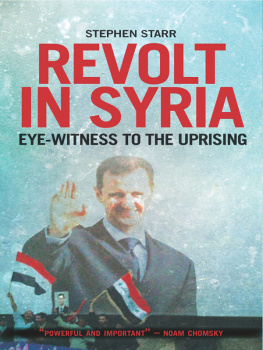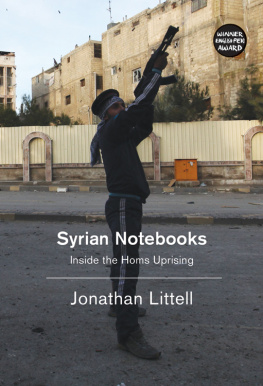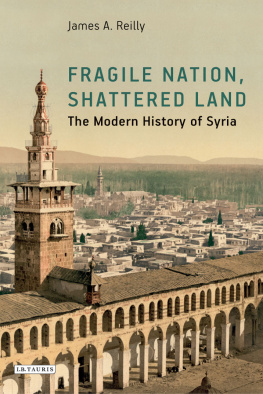Thank you for downloading this Simon & Schuster ebook.
Get a FREE ebook when you join our mailing list. Plus, get updates on new releases, deals, recommended reads, and more from Simon & Schuster. Click below to sign up and see terms and conditions.
CLICK HERE TO SIGN UP
Already a subscriber? Provide your email again so we can register this ebook and send you more of what you like to read. You will continue to receive exclusive offers in your inbox.
We hope you enjoyed reading this Simon & Schuster ebook.
Get a FREE ebook when you join our mailing list. Plus, get updates on new releases, deals, recommended reads, and more from Simon & Schuster. Click below to sign up and see terms and conditions.
CLICK HERE TO SIGN UP
Already a subscriber? Provide your email again so we can register this ebook and send you more of what you like to read. You will continue to receive exclusive offers in your inbox.

An Imprint of Simon & Schuster, Inc.
1230 Avenue of the Americas
New York, NY 10020
www.SimonandSchuster.com
Copyright 2017 Jonathan Alpeyrie, Stash Luczkiw, and Bonnie Timmermann
All photographs courtesy of Jonathan Alpeyrie
All rights reserved, including the right to reproduce this book or portions thereof in any form whatsoever. For information, address Atria Books Subsidiary Rights Department, 1230 Avenue of the Americas, New York, NY 10020.
First Atria Books hardcover edition October 2017
 and colophon are trademarks of Simon & Schuster, Inc.
and colophon are trademarks of Simon & Schuster, Inc.
For information about special discounts for bulk purchases, please contact Simon & Schuster Special Sales at 1-866-506-1949 or .
The Simon & Schuster Speakers Bureau can bring authors to your live event. For more information, or to book an event, contact the Simon & Schuster Speakers Bureau at 1-866-248-3049 or visit our website at www.simonspeakers.com.
Interior design by Amy Trombat
Jacket design by Laywan Kwan
Jacket photograph by Dimitar Dilkoff
Library of Congress Cataloging-in-Publication Data
Names: Alpeyrie, Jonathan, author. | Luczkiw, Stash, co-author. | Timmermann, Bonnie, co-author.
Title: The shattered lens : a war photographers true story of captivity and survival in Syria /
Jonathan Alpeyrie with Stash Luczkiw and Bonnie Timmermann. Description: First Atria Books hardcover edition. | New York : Atria Books, 2017.
Identifiers: LCCN 2017016403 (print) | LCCN 2017027082 (ebook) | ISBN 9781501146541 (ebook) | ISBN 9781501146503 (hardback) | ISBN 9781501146534 (paperback)
Subjects: LCSH: Alpeyrie, JonathanKidnapping, 2013. | Alpeyrie, JonathanCaptivity, 2013. | SyriaHistoryCivil War, 2011Biography. | KidnappingSyriaHistory21st century. | TortureSyriaHistory21st century. | SurvivalSyriaHistory21st century. | PhotojournalistsBiography. | War correspondentsBiography. | French AmericansBiography. | BISAC: BIOGRAPHY & AUTOBIOGRAPHY / Military. | BIOGRAPHY & AUTOBIOGRAPHY / Artists, Architects, Photographers. | BIOGRAPHY & AUTOBIOGRAPHY / Personal Memoirs.
Classification: LCC DS98.72.A47 (ebook) | LCC DS98.72.A47 A3 2017 (print) | DDC 956.9104/231092dc23
LC record available at https://lccn.loc.gov/2017016403
ISBN 978-1-5011-4650-3
ISBN 978-1-5011-4654-1 (ebook)
I would like to dedicate the book to Bonnie Timmermann, who has made this possible from the beginning; to my mother, who has given me the strength in life; and to my father, who gave me the intellectual abilities to understand this world.
DISCLAIMER
As far as the limits and caprices of memory allowespecially in the fog of war and fearthis story is as true as it gets. Ive taken liberties with many of the names in order to protect anyone still in harms way and accommodate those who prefer not to advertise their actions or might still pose a danger to me. Some of the names Ive simply forgotten or never knew.
BOOK 1
ENTER THE LEVANT
SOMETIMES YOU CAN SENSE when things are about to go terribly wrong. You get a premonition, a sign smacks you in the face. Sometimes theres a stirring in the marrow of your bones, a sort of queasiness in your soul, and you just know.
In the lead-up to the day when things went terribly wrong for meApril 29, 2013I didnt have a clue about what was to come. It all seemed if not good, then at least business as usual in an unusual business. Maybe that Scud missile whistling in the distance over the Syrian border should have been taken as a warning. Or the account of those other journalists killed by government shelling. Or the rank taste of the bird Id shot for lunch.
But I was too focused on the task at hand: to capture images of destruction and carnage. Because if I did my job well, I knew one of those images could serve as an icon of that particular confluence of events in history.
It wasnt that I thought I was immortal. Actually, Ive always been cautious, probably too preoccupied with making sure that everything goes smoothly and safely. But of course, Im always walking into bad situations. Thats my job. I take pictures of people fighting. Not boxing matches, not street fights, but warsarmies and militias going at it with heavy weapons to alter the course of history. And at the risk of sounding arrogant, Ive always felt like I could somehow make some good out of any bad situation. Maybe I was fooling myself. Its easy to make up all sorts of myths about yourself after the fact.
It was my third trip to the Syrian combat zone. The war had broken out in 2011 during the Arab Spring. The mythography around the war now offers us the image of a spark that had ignited the conflict: six kids in the southern city of Daraa arrested for writing antigovernment graffiti: The people want the fall of the regime. They were tortured in prison, and Syrians all around the country started demonstrating against their dictatorial president, Bashar al-Assad, who tried to crush any dissent before it had a chance to fester. I personally doubt that any historical cause and effect is ever so clear-cut, but it does make for a moving story.
Bashar al-Assad, like his father Hafez before him, and like so many leaders in that part of the world, would not tolerate any opposition. Indeed, by all accounts both Assads were butchers. That so much of the population wanted something elsesomething better, kinderwas no surprise. The thornier issue was who wanted whatand why. My job was to go and see. In the purest sense, I was expected to serve as the worlds eyes on the conflict.
THERE ARE TWO WAYS you can go into a field where human misery is your currency. Either you go in as a prism and refract the light, giving the subject a face and voice in the process, or you go in and feed off the light like a vampire feeding off blood. In the latter case the voice into which the light is translated turns into a scream. Usually the scream is more immediate, more effective than peering into a soul most dont even believe in. People have developed a need for images of horror.
But these are the last things you think about when youre there. Like any other job, the primary purpose is to get it done, get paid, and move on to the next task. I was working for Polaris Images, a photo agency. The heyday for conflict photographers was long gonewe were one of the first trades to get slammed by the digital revolutions bulldozer. I didnt start taking photos for a living until the early 2000s, so I was essentially part of the first post-film generation of photographers.
Next page





![Cockburn Patrick - Syria Burning: A Short History of a Catastrophe: [VersoUSAed]](/uploads/posts/book/207719/thumbs/cockburn-patrick-syria-burning-a-short-history.jpg)




 and colophon are trademarks of Simon & Schuster, Inc.
and colophon are trademarks of Simon & Schuster, Inc.